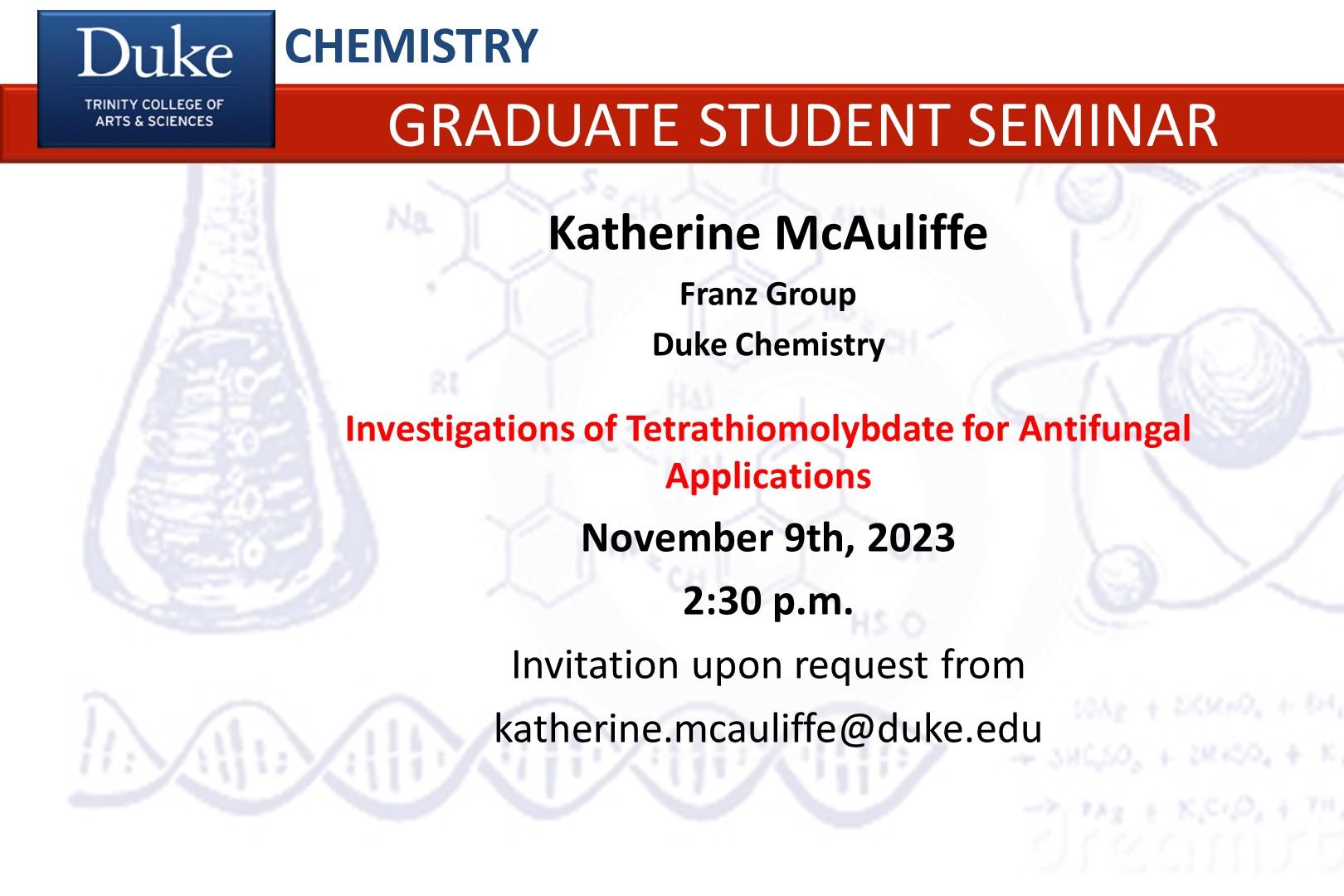
Speaker:
Katherine McAuliffe, Ph.D. Candidate
Katherine McAuliffe, Ph.D. Candidate
Katherine Franz Ph.D., Advisor
Abstract: Investigations of Tetrathiomolybdate for Antifungal Applications
In recent years, the demand for new antifungal drugs has increased, partly due to the rise of antifungal drug resistance. Previous research has shown that Candida albicans is hypersensitive to copper (Cu) dyshomeostasis in the presence of antifungal drug treatment by the popular triazole fluconazole. This work aims to investigate the ability of metal trafficking inhibitors to alter metal homeostasis in C. albicans. Toward this goal, we identified five compounds with demonstrated metal-trafficking protein inhibition from a literature review. One of the metal trafficking inhibitors tested, the Cu chelator ammonium tetrathiomolybdate (TTM), was found by C. albicans growth assays to have antifungal properties, an activity that has not been documented previously . Data from ion-coupled plasma mass spectrometry revealed significantly increased intracellular Mo levels, confirming that TTM internalizes into the cell. Utilizing bulk proteomic methods to measure protein stability changes, we found that TTM treatment results in altered stability of metalated proteins such as cytochrome c, Cu/Zn superoxide dismutase 1 (Sod1), the flavo-hemoglobin nitric oxide dioxygenase (Yhb1), and the multicopper oxidase Fet31. TTM treatment destabilizes Sod1 and increases the reactive oxygen species (ROS) burden while stabilizing and upregulating the compensatory Yhb1. Upon comparison of TTM's antifungal activity to that of the extracellular Cu chelator bathocuproinedisulfonic acid (BCS), we determined that TTM's activity is not due to Cu chelation and subsequent deprivation, as BCS does not inhibit C. albicans growth or impact the metalloproteome stability in the same way. Additionally, inhibiting the upregulated and stabilized Yhb1 during TTM treatment with azole antifungals with known Yhb1 inhibiting capabilities resulted in synergistic antifungal activity as determined by checkerboard growth assays. The combined inhibition of Yhb1 with TTM treatment is a promising antifungal development avenue.